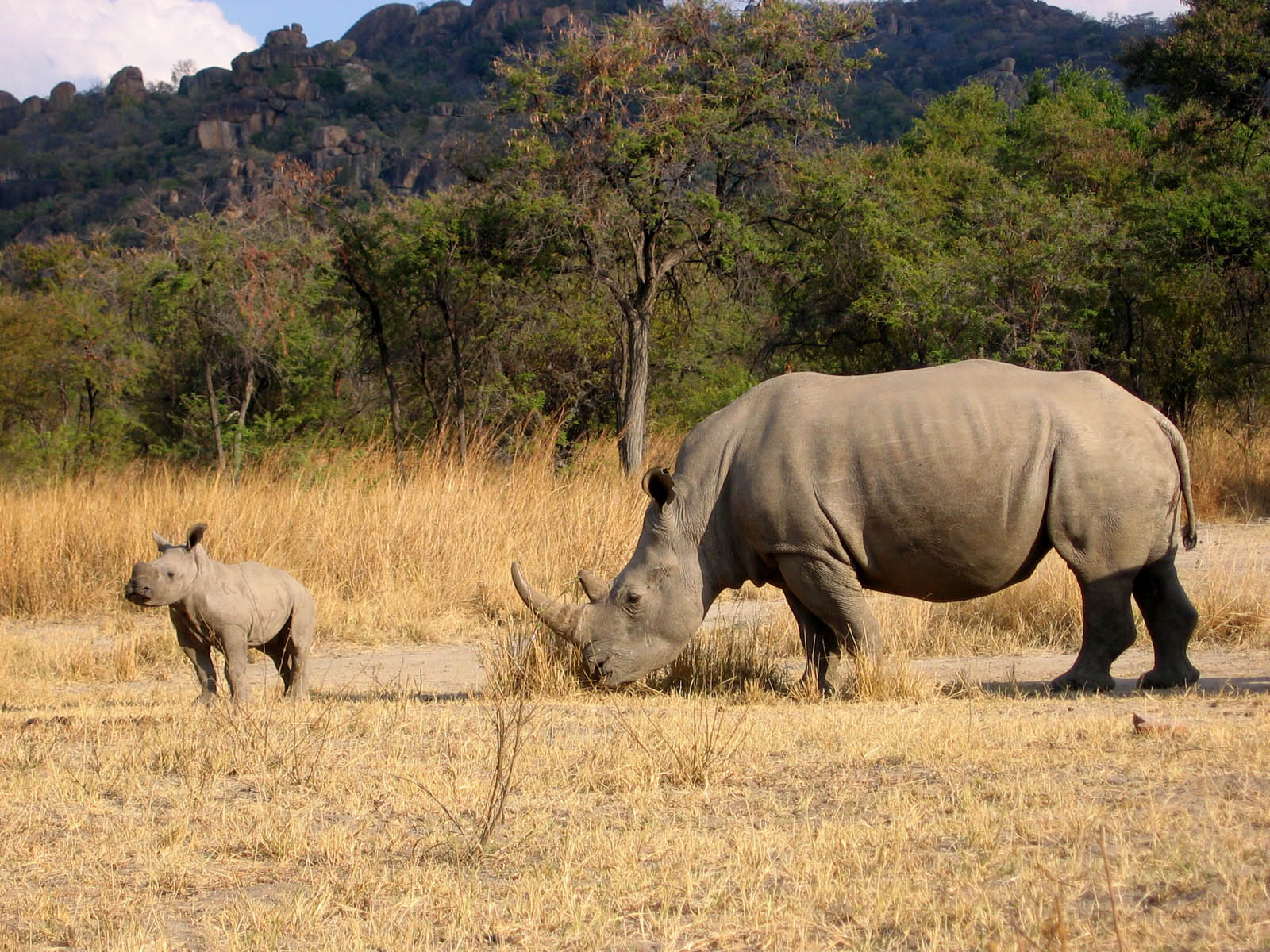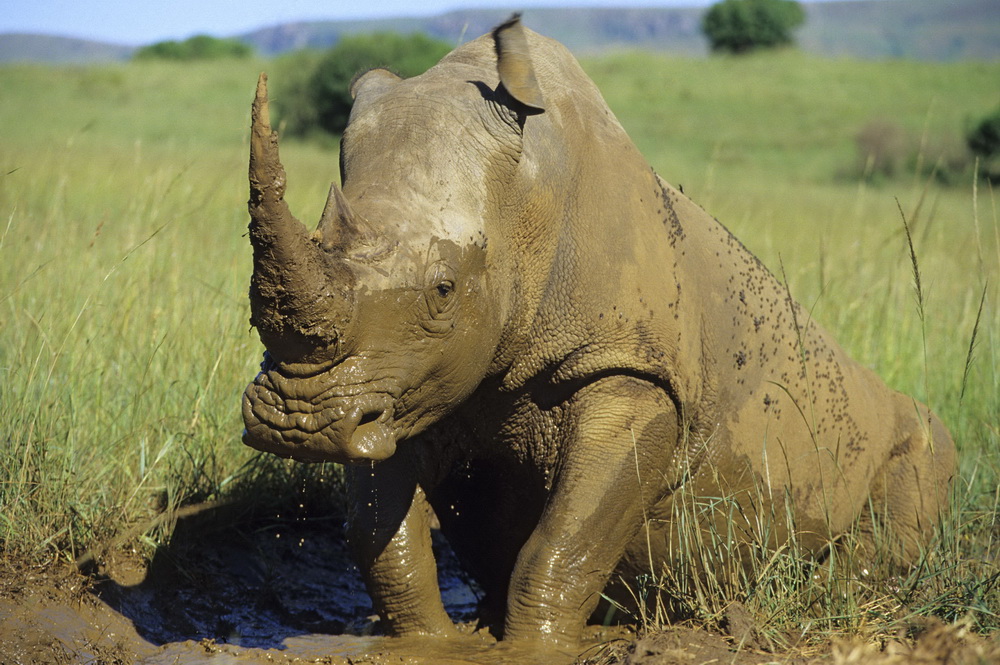


The last rhinos in the Americas became extinct during the Pliocene.

The North American Teleoceras had short legs, a barrel chest and lived until about 5 million years ago. Menoceras, a pig-sized rhinoceros, had two horns side-by-side. However, several independent lineages survived. The earliest members of Rhinocerotidae were small and numerous at least 26 genera lived in Eurasia and North America until a wave of extinctions in the middle Oligocene wiped out most of the smaller species. The family of all modern rhinoceros, the Rhinocerotidae, first appeared in the Late Eocene in Eurasia. The amynodontids were hippopotamus-like in their ecology and appearance, inhabiting rivers and lakes, and sharing many of the same adaptations to aquatic life as hippos. The Amynodontidae, also known as “aquatic rhinos”, dispersed across North America and Eurasia, from the late Eocene to early Oligocene. Hyracodontids spread across Eurasia from the mid-Eocene to early Miocene. Like a giraffe, it ate leaves from trees. The hornless Paraceratherium was almost seven metres high, ten metres long, and weighed as much as 15 tons. The smallest hyracodontids were dog-sized the largest was Paraceratherium, one of the largest known land mammals that ever existed. Hyracodontidae, also known as “running rhinos”, showed adaptations for speed, and would have looked more like horses than modern rhinos. Three families, sometimes grouped together as the superfamily Rhinocerotoidea, evolved in the late Eocene, namely the Hyracodontidae, Amynodontidae and Rhinocerotidae. This small hornless ancestor resembled a tapir or small horse more than a rhino. Fossils of Hyrachyus eximus found in North America date to this period. Rhinocerotoids diverged from other perissodactyls by the early Eocene. The IUCN Red List identifies the Black, Javan, and Sumatran rhinoceros as critically endangered. Both African species and the Sumatran rhinoceros have two horns, while the Indian and Javan rhinoceros have a single horn. The horns are made of keratin, the same type of protein that makes up hair and fingernails. People grind up the horns and consume them, believing the dust has therapeutic properties. By weight, rhino horns cost as much as gold on the black market. East Asia, specifically Vietnam, is the largest market for rhino horns.

Rhinoceros are killed by some humans for their horns, which are bought and sold on the black market, and used by some cultures for ornaments or traditional medicine. Unlike other perissodactyls, the two African species of rhinoceros lack teeth at the front of their mouths, relying instead on their lips to pluck food. They generally eat leafy material, although their ability to ferment food in their hindgut allows them to subsist on more fibrous plant matter when necessary.
THE RHINOCEROS SKIN
They have a herbivorous diet, small brains (400–600 g) for mammals of their size, one or two horns, and a thick (1.5–5 cm) protective skin formed from layers of collagen positioned in a lattice structure. Members of the rhinoceros family are some of the largest remaining megafauna, with all species able to reach or exceed one tonne in weight. The term “rhinoceros” is often more broadly applied to now extinct species of the superfamily Rhinocerotoidea. Two of the extant species are native to Africa and three to Southern Asia. Rhinoceros, commonly abbreviated to rhino, is one of any five extant species of odd-toed ungulates in the family Rhinocerotidae, as well as any of the numerous extinct species therein.


 0 kommentar(er)
0 kommentar(er)
